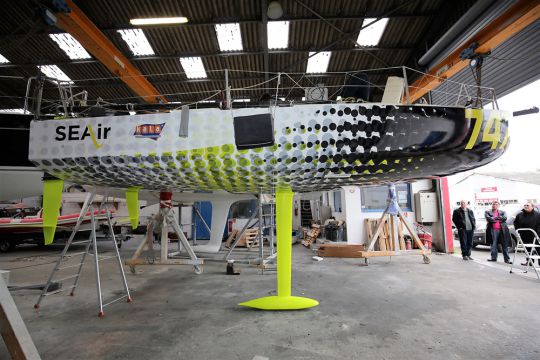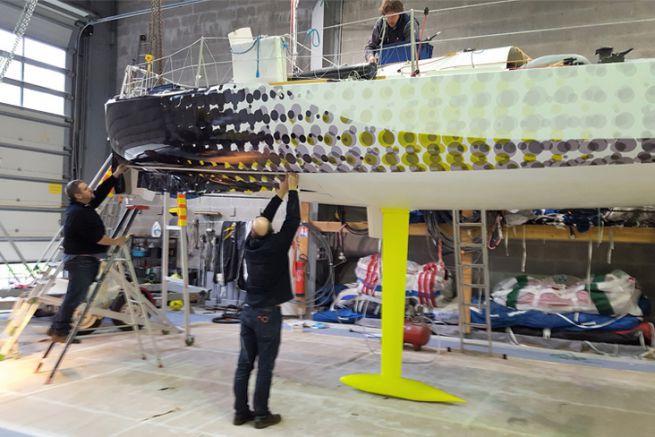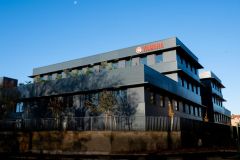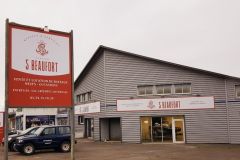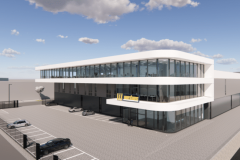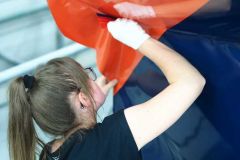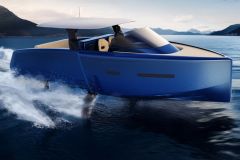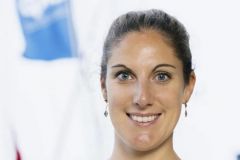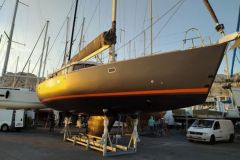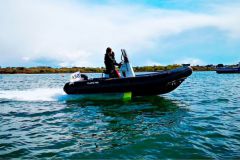The covering of the flying monohull with foil, the Mini 747 SEAir, has given the Breton company Kala and the installers a hard time. This 6.50 metre boat, which is the first ocean racing monohull to fly, is adorned with a very beautiful black and green graphics, in the colours of her father SEAir, after two days of delicate pose.
And if this monohull is unique, the company in charge of covering is no less so. Located in Nouvoitou, Ille-et-Vilaine, Kala is the only French manufacturer of large format laminators.
"Kala and SEAir, it is above all the association of two Breton companies sharing common values of innovation and embarked in the same nautical adventure" confirms Patrick Marillier, Managing Director of Kala, which employs 17 people.

Kala printed, laminated and delicately cut the wrapped sheets in-house. The installation, completed in January, was carried out by Application Team located in Belgium and by Uniflow installed in Roscoff in Finistère, joined on the second day by Ethique & Tact du Morbihan
The Breton manufacturer used the 3M Envision SV480 Cv3 printing film and the 3M conformable glossy laminating film. Lamination and cutting were carried out on Kala material, the Arkane 1650 laminator and the KalaXY table.
This covering designed by the graphic designer specialized in the nautical Jean-Baptiste Epron, was a real technical challenge for many reasons: the rounded shape of the bow of the monohull, the graphics composed of gradations, the nature of the support..
Careful preparation
But before the covering itself, it was necessary to prepare the support. First of all, the SEair hangar was heated to a temperature between 18 and 22° so as not to damage the materials.

Then the hull of the boat suspended on hoists was meticulously degreased before applying a specific solution that facilitates the installation (and removal) of the vinyl.
The covering also required a primer to grip in certain places to ensure a very good
adhesion of the printed support during navigation and a sealing varnish in order to perfectly protect the covering strips.
Multiple technical difficulties
"The complexity of this implementation lies in the shape of the boat itself. It is a rounded, non-deformable part. A real puzzle for absorbing excess matter! It's a high fashion job where we've made progress by feeling and constantly adapting" says Jean Hans, head of the Application Team installation company.
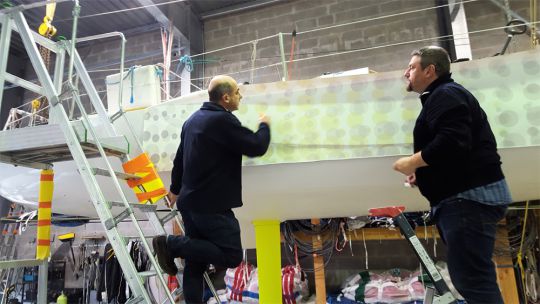
In addition, Jean-Baptiste Epron's graphics required numerous cuts and ultra precise fittings. "The graphic design, leaving aside the simplicity of plain colours in favour of gradients and circles, adds to the complexity of the covering. It's a goldsmith's job and tailor-made", says Jean Hans.
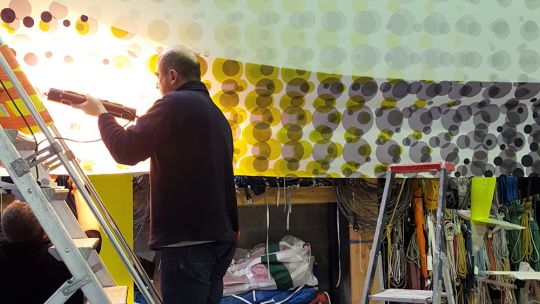
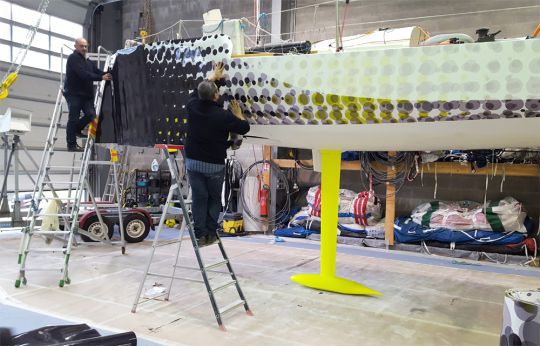
And the 0.7 mm thick carbon shell has banned the use of the cutter. The sheets were cut with ultra-thin steel cables which, once the adhesive film was applied, cut the material.
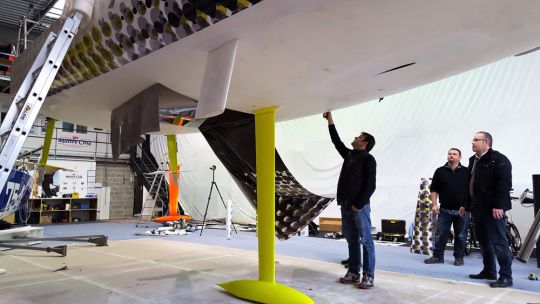
The preparation of the sheets was done in a mirror work in order to obtain a perfect port / starboard symmetry.
"The hardest part was the connection of the edges to the keel and fortunately the rounded bow had no gradient! For the transom, and more simply, we opted for pre-spaced with bubble cutting" .
If the styling has proved perilous, today the Mini 747 SEAir is in fashion and is flying in its finest attire
